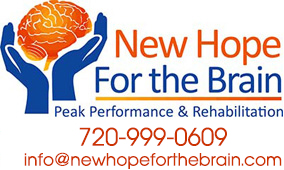 1. What is Neurofeedback?
1. What is Neurofeedback?
There is a massive amount of information contained in your brain waves. The shape of the waveforms creates “patterns” that are there in response to events in the history of your brain. When normal brain waves are disrupted by traumatic events, resulting patterns are usually slower than normal and interfere with optimal functioning. Neurofeedback is the process of training your brain to reduce or eliminate this slow activity.
2. How does it work?
Your brain sees its own activity in real time on the screen of the Neurofeedback computer. This is like the brain seeing its own electrical activity in an electronic mirror. When slow activity is dominant, your brain “automatically” corrects it and immediately sees the change on the monitor. Over time, the newer, faster, more efficient pattern of electrical firing in the brain replaces the slow activity and brain function improves. It is easier to understand that our brain heals a cut or scratch than it is to understand that the brain “heals” itself in the same way.
3. Who can profit from Neurofeedback?
The obvious answer to this question is that those with challenges to the brain caused from injury, illness or inherited conditions can profit the most. However, most adults have experienced some loss of function due to such things as environmental conditions, nutritional deficits, oxygen deprivation and aging. So, most adults can benefit from “tuning up” the brain’s neuronal activity.
4. Does medication play a role in Neurofeeback?
Since Neurofeedback is the process of changing brain function, medications that alter brain function may interfere with the Neurofeedback process. There are no medications that enhance Neurofeedback training or make it easier. However, we ask clients to remain on the medications they have been prescribed and to work with their prescribing physicians to reduce or eliminate unwanted medications as their brain function improves and they are no longer needed.
5. How many sessions of Neurofeedback will I need?
Neurofeedback is training, not treatment. The number of Neurofeedback sessions needed to reach specific improvement goals will vary according to how fast you can learn the new brain wave information. It is like learning any new motor skill and requires practice. Most people make significant gains within 10 to 12 sessions. Difficult situations or severe brain dysfunction will require more. The good news is that once the changes are made, they are permanent and no further sessions are required to maintain the gains.
6. Why do you refer to Neurofeedback as “training” rather than “treatment”?
Neurofeedback is not treatment as there is nothing done to you. Your brain uses the information provided by the Neurofeedback equipment to make changes. It is essentially a learning process.
7. Why does brain wave training work when so many other methods have failed?
With Neurofeedback, your brain is actively involved in the process of making change. Our wonderful brain is designed to recover homeostasis (balance) in all of the body’s systems, including itself. With the needed information received and acted upon in the Neurofeedback process, the brain readily returns to a more balanced, normal state. We use “training” rather than “treatment” because treatment refers to what is done to the brain without its participation.
8. Do you take insurance?
Some insurance companies will pay for Biofeedback when the CPT code of 90901 is used. If needed, we will provide documentation of services rendered and fees paid so that you may submit a claim to your insurance company.
9. I am 69 years old. Is age a factor in learning this technique?
The brain learns and can be changed (due to neurogenesis) throughout our lifetime. Age does not work against your ability to change your brain. We have taught people in their 90s to improve brain function and it does not take longer than for a younger client. It is important to remember that physiological learning is different from academic learning in that it is not linear. Physiological learning is assisted by the brain’s focus on survival.

